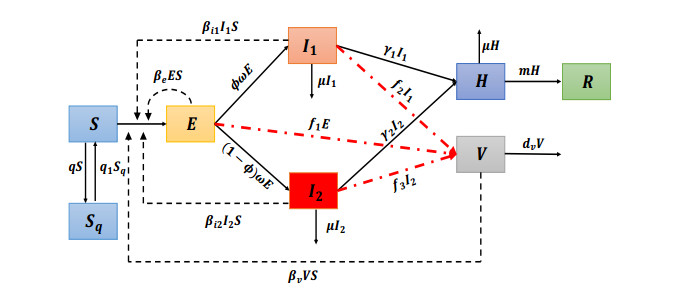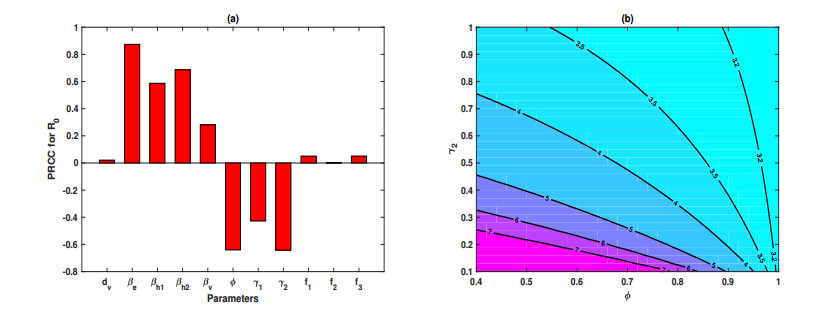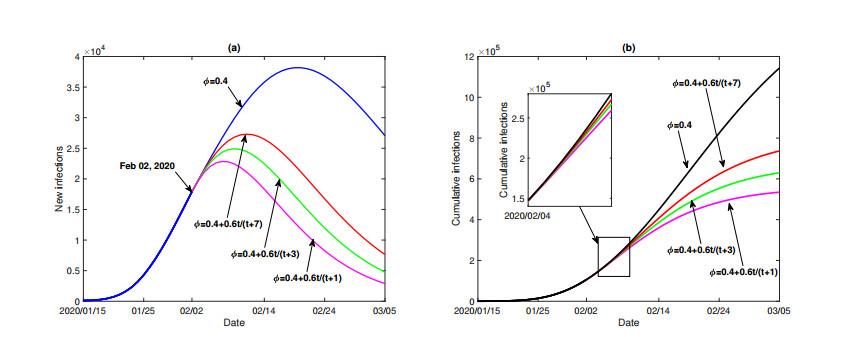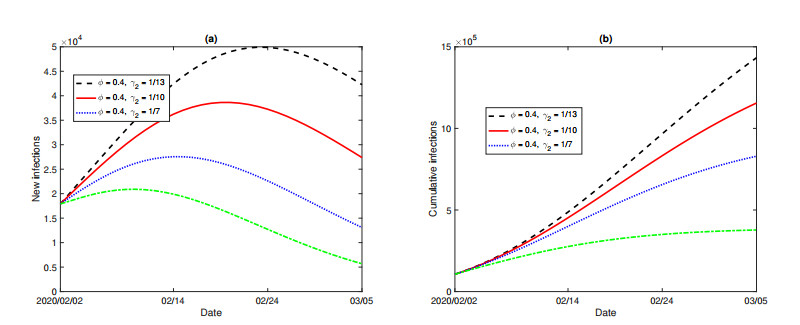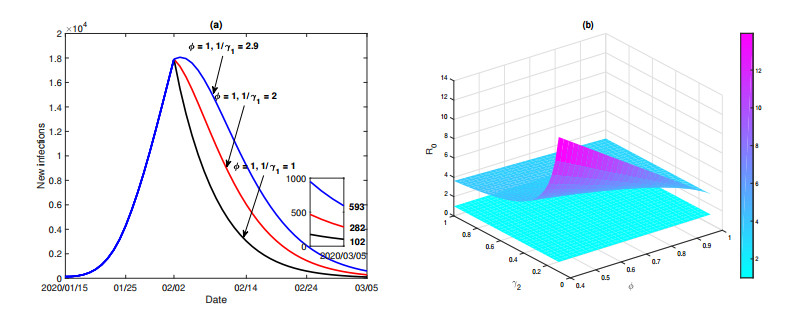Alzheimer's disease (AD) has been recently considered as a possible brain infection related to the Creutzfeldt-Jakob disease (CJD) transmissible dementia model. As with CJD, there is controversy whether the infectious agent is an amyloid protein (prion theory) or a bacterium. In this review, we show that the prion theory lacks credibility because spiroplasma, a tiny wall-less bacterium, is clearly involved in the pathogenesis of CJD and the prion amyloid can be separated from infectivity. In addition to prion amyloid deposits, the transmissible agent of CJD is associated with amyloids (A-β, Tau, and α-synuclein) characteristic of other neurodegenerative diseases including AD and Parkinsonism. Reports of spiroplasma inducing formation of α-synuclein in tissue culture and Borrelia spirochetes inducing formation of A-β and Tau in tissue culture suggests that bacteria may have a role in the pathogenesis of the neurodegenerative diseases.
1.
Introduction
SARS-CoV-2, as a novel coronavirus, was first identified by the Chinese authorities in Wuhan, Hubei Province of China, which has caused the pneumonia (COVID-19) outbreak in China and other countries [1,2]. Until 05 March 2020, it has spread to all provinces of the mainland China and led to a total of 80552 confirmed cases with 3042 deaths [3]. The number of the confirmed cases is still increasing and the restriction of work causes a tremendous hit on Chinese society and economic.
Since December 2019, a series of pneumonia cases emerged in Wuhan, Chinese public health authorities have taken very rapidly responsive strategies including active case finding, closing Huanan Seafood Wholesale Market, improving public awareness of self-protection measures and so on [4]. Despite all of those, the number of infection cases has been continuously increasing. Due to the quick increase in confirmed cases of COVID-19, the Chinese government revised the law to add COVID-19 as class B agent on 20 January 2020, and then Public health officials classified the novel virus as class A agent [5]. In order to prevent further spread of COVID-19 nationally and globally, the government of Wuhan carried out a lockdown at 10:00 on 23 January 2020 [6]. Some interventions, including intensive contact tracing followed by quarantine of individuals, isolation of infected individuals and travel restrictions have been implemented, while the number of new confirmed cases increased in Wuhan and other cities continuously (see Figure 1).
COVID-19 is difficult to diagnose, and a delay between the onset of symptoms and accurate diagnosis is frequently observed. It is worth noting that, except reported confirmed cases of pneumonia, there are still many undiagnosed and delayed-diagnosis infections due to lacks of diagnostic reagents for the virus and the long waiting time for diagnosis [7,8]. Considering the person-to-person transmission [9,10], the undiagnosed infections have the ability and possibility to transmit the virus to other public susceptible people or family members during their searching for or waiting for a diagnosable hospital, and hence increase the risk of spatial transmission and potential infection of COVID-19. The most important aspects are the ability to diagnose and identify the infected in time, and the treatment of the confirmed patients.
The impact of delay in diagnosis on the infectious diseases such as foot-and-mouth disease, mycobacterium tuberculosis and African viral hemorrhagic fever has been extensively studied [11,12,13]. Those studies indicate that delay in diagnosis could increase both infections and economical loss. In particular, for Ebola, the rapid diagnostic tests and early detection of Ebola could allow early triaging of patients, thereby reduce the potential for nosocomial transmission and epidemic size [14,15,16]. In addition, the delay in diagnosis is closely associated with the substantially case fatality. Therefore, assessing the effect of delay in diagnosis is of crucial importance for the transmission and control of COVID-19.
Mathematical modeling studies on COVID-19 focused on the prediction of confirmed cases of the novel coronavirus pneumonia in Wuhan and other cities[17,19,20,21], the estimation of basic reproduction number ($ R_0 $) based on the data of reported confirmed cases[17,18,22,23], the estimation of the unreported number of COVID-19 cases in China in the first stage of the outbreak [24], and also the potential risks of disease spreading [25,26]. Some authors [27,28] evaluated effects of the Wuhan travel restrictions or lock-down of the city in response to the novel coronavirus outbreak. However, the effect of delay in diagnosis on the dynamic evolution of COVID-19 has not been studied yet.
The principal purpose of this study is to present a dynamical model for transmission dynamics of COVID-19 and to evaluate the effect of delay in diagnosis on epidemic trend and characteristics of COVID-19. The main findings shed new insight on the disease interventions and control.
2.
Materials and method
2.1. Data
The data of confirmed COVID-19 cases in mainland China was collected from the National Health Commission of the People's Republic of China [5]. Data information includes the cumulative number of confirmed cases and the new number of confirmed cases, shown in Tables 1 and 2. The number of cumulative confirmed cases remained at 41 from 1 to 15 January 2020 according to the official report, i.e., no new case was reported during these 15 days, which appears inconsistent with the following rapid growth of the epidemic since 16 January 2020. The data set from 15 January to 02 February 2020 is used for model calibration, while the data set from 03 February to 05 March 2020 is applied for model validation.
2.2. The model
According to the clinical progression of COVID-19 and epidemiological status of individuals, we establish a compartmental model of SEIR type, where delay in diagnosis is considered. Assume that the infected individuals are in two different situations, some are in resource-rich setting and can be diagnosed in time while others are in resource-poor setting and can not be timely diagnosed with a longer diagnostic waiting time. Everyone in the population is susceptible. All the infected individuals will be admitted into hospitals as soon as they are diagnosed.
The population is divided into susceptible ($ S $), self-quarantine susceptible ($ S_q $), exposed ($ E $), infectious with timely diagnosis ($ I_1 $), infectious with delayed diagnosis ($ I_2 $), hospitalized ($ H $) and recovered ($ R $). $ V $ denotes the virus in the environment. A schematic description of the model is depicted in Figure 2.
The susceptible individuals can move to the compartment $ S_q $ at rate $ q $ by staying at home for quarantine. The self-quarantined individuals are released from quarantine and become susceptible again at rate $ q_1 $. The susceptible individuals are infected via contact with exposed individuals, infectious individuals, and also virus. All the newly SARS-CoV-2-infected individuals are assumed to be asymptomatic but are capable of infecting the susceptible (move into $ E $). The exposed individuals become infectious (symptomatic) after incubation period $ 1/\omega $. In reality, only a proportion $ \phi $ of symptomatic patients could be diagnosed in time, while the rest may be delayed to be diagnosed due to limited hospital or diagnostic resources. Then the infectious with timely diagnosis $ I_1 $ are decreased after $ 1/\gamma_1 $ days as soon as they are diagnosed (move into $ H $). The infectious with delayed diagnosis $ I_2 $ are diagnosed and hospitalized after $ 1/\gamma_2 $ days, where $ 1/\gamma_1 < 1/\gamma_2 $. The hospitalized individuals are decreased at recovery rate $ m $. All infections ($ I_1 $, $ I_2 $, $ H $) are decreased by diseased-induced death rate $ \mu $. The virus in the environment comes from both the exposed and the infectious at rate $ f_i $ ($ i = 1, 2, 3 $) and it is cleared at rate $ d_v $. The transfer diagram in Figure 2 leads to
where $ \beta_{e} $, $ \beta_{i1} $, $ \beta_{i2} $, and $ \beta_v $ denote the transmission rates from the exposed, infectious with or without timely diagnosis, and virus in the environment to the susceptible, respectively. $ f_i $, $ i = 1, 2, 3 $ is the virus released rate via the exposed and the infectious. Here all parameters are assumed to be positive and their biological significance, default values, and reference resources are summarized in Table 3.
2.3. Method for estimation
We use the least-square method to carry out the parameter estimation, which is implemented by the command fmincon, a part of the optimization toolbox in MATLAB. The least-square estimation is to find the parameter values to minimize the following objective function
where $ \Theta $ is a parameter vector to be estimated, $ n $ is the number of reported data, $ \hat{I}(t) $ is the actual reported confirmed cases, and $ I(t) $ is the theoretical confirmed at day $ t $. The dynamics of $ I(t) $ is governed by
where $ I_1 $ and $ I_2 $ are determined by model (2.1).
From the data of confirmed cases in mainland China and in Wuhan, we set 15 January 2020 as the initial time. Since the COVID-19 infectious cases before 15 January 2020 were all in Wuhan, we set the population size of Wuhan as the initial value of the susceptible, i.e., $ S(0) = 11081000 $. On 15 January, 41 cases were confirmed and hospitalized, then $ H(0) = 41 $; $ 12 $ cases were recovered, hence $ R(0) = 12 $. We set $ E(0) = 399 $ because the suspected cases on 15 January 2020 is 399. The incubation period of COVID-19 is estimated to be 5.2 [10], hence $ \omega = 1/5.2 $. The average waiting time of the infectious with timely diagnosis is $ 2.9 $ day [29], thus $ \gamma_1 = 1/2.9 $. It is reported that the infectious individuals can recover within two weeks [30], thus the recovery rate $ m $ is $ 1/14 $.
3.
Results
3.1. Parameter estimates
We use the method in §2.3 to estimate parameter values by fitting model with the data of confirmed cases of COVID-19 (see Table 1). The fitting results of model (2.1) with the confirmed cases are given in Figure 3 and the estimated parameter values are listed in Table 3.
With the increase of the medical supply and reasonable allocation of medical resources, the resources-dependent parameters $ \phi $, $ \gamma_1 $ and $ \gamma_2 $ increase with respect to time $ t $ and the correlation of those parameters with $ t $ are estimated as $ \phi = 0.4+0.6t/(t+3) $, $ 1/\gamma_1 = 2.9-0.9t/(t+5) $ and $ 1/\gamma_2 = 10-7t/(t+5) $. From Table 3, it is observed that, among the transmission rates ($ \beta_{i1} $, $ \beta_{i2} $, $ \beta_e $, $ \beta_v $), the transmission rate $ \beta_{i2} $ of the infectious with delayed diagnosis is the biggest. It indicates that the infectious with delayed diagnosis plays a critical role in the spread of COVID-19. Although the transmission rate $ \beta_v $ is much smaller than the other threes, it may ignite the spread of COVID-19. Even if there are no exposed or infectious individuals, the susceptible could be infected by accidental contacts with virus in environment.
Moreover, Figure 3 shows the fitting results of model (2.1) with the reported data of confirmed cases. It is seen that our model prediction shows a similar trend to the reported data of both the new confirmed cases and cumulative confirmed cases. In particular, if the efficiency of diagnosis keeps increasing as $ \phi = 0.4+0.6t/(t+3) $, $ 1/\gamma_1 = 2.9-0.9t/(t+5) $ and $ 1/\gamma_2 = 10-7t/(t+5) $, the predicted values of cumulative confirmed cases will increase further and provide very good fit with the reported data of cumulative confirmed cases. From Figure 3(a), it is observed that, from 06 to 13 February, the prediction of model (2.1) somewhat deviates from the reported data of new confirmed cases. The possible reason is that the diagnosed-efficiency parameters $ \phi $, $ \gamma_1 $ and $ \gamma_2 $ in the model keep increasing with time $ t $ continuously, while in the real-world application, the medical supply and medical resources increased intermittently. The intermittent increase of medical resources makes the actual diagnosis efficiency being different from the model estimation. In addition, from 12 February, the clinically diagnosed cases were statistically seen as the new confirmed cases in Hubei province, and the inclusion of those cases drives the surge in the number of new confirmed on 12 and 13 February. Model (2.1) makes a good prediction of the new confirmed cases from 14 February to 05 March 2020.
3.2. Sensitivity analysis
The basic reproductive number $ R_0 $ is a measure of the potential for an infectious disease to spread through an immunologically naive population. It is defined as the average number of secondary cases generated by a single infectious case in a completely susceptible population. Based on (2.1), by the next generation matrix method [31], the basic reproduction number reads
where $ S_0 $ is the initial value of the susceptible.
The basic reproduction number $ R_0 $ is a significant indicator in both transmission risks and control of an infectious disease. In order to provide a comprehensive understanding of the influence of different input parameters and their variations on the model outcomes, and to characterize the most important parameters, the sensitivity analysis is conducted by obtaining the partial rank correlation coefficients (PRCCs) [32] for various parameters against $ R_0 $.
The parameters considered in the sensitive analysis include transmission rates ($ \beta_e $, $ \beta_{i1} $, $ \beta_{i2} $, $ \beta_v $), factors related to the diagnosis efforts ($ \gamma_1 $, $ \gamma_2 $, $ \phi $), virus released rates ($ f_1 $, $ f_2 $, $ f_3 $) and clear rate of virus ($ d_v $). Figure 4 (a) illustrates the PRCCs of $ R_0 $ with respect to model parameters. It suggests that $ R_0 $ is more sensitive to $ \beta_e $, $ \beta_{i2} $, $ \beta_{i1} $ and $ \beta_v $ in order among the transmission rates. That is to say, the exposed and the infectious with delayed diagnosis contribute more to the transmission and spread of COVID-19, compared with the infectious with timely diagnosis and virus. In addition, the PRCCs values of $ \gamma_1 $, $ \gamma_2 $, and $ \phi $ are also big. From Figure 4(b), the increase of $ \phi $ and $ \gamma_2 $ can significantly reduce the value of $ R_0 $, which verifies that delay in diagnosis plays a critical role in the transmission of COVID-19. Therefore, the richness and distribution of medical resources and the early timely diagnosis are also very important for the prevention and control of COVID-19.
3.3. Effect of delay in diagnosis
In order to further explore the possible impact of enhanced diagnosis efficiency and resources richness on the disease transmission, we plot the predicted new confirmed cases ($ \gamma_1 I_1(t)+\gamma_2 I_2(t) $) and new infections ($ I_1(t)+I_2(t) $) with respect to the proportion of the infectious with timely diagnosis $ \phi $ and delayed diagnosed rate $ \gamma_2 $.
In reality, resources such as abundant diagnostic test kits, diagnosable hospitals, and available beds have been supplied to support the diagnosis and treatment of COVID-19 since 02 February, the proportion $ \phi $ of the infectious with timely diagnosis is gradually improved as time goes on due to the increasing supply of diagnostic resources. We set $ \phi = \phi_0+(1-\phi_0)t/(t+a) $, where $ \phi_0 $ (its estimated value is $ 0.4 $ listed in Table 3) is the basic proportion and $ a $ represents the time when the proportion improves to $ (1+\phi_0)/2 $.
Figure 5 depicts the effect of the proportion $ \phi $ of the infectious with timely diagnosis on the number of confirmed cases. With the increasing of $ \phi $, the number of new confirmed cases increases first and then decreases, while the number of cumulative confirmed cases always decreases; the peak value of the new confirmed cases decreases and the peak time of the new confirmed cases arrives much earlier. Specifically, compared with the baseline scenario with $ \phi = 0.4 $, when $ \phi $ is increased to $ 0.7 $ in one week ($ \phi = 0.4+0.6t/(t+7) $), three days ($ \phi = 0.4+0.6t/(t+3) $), or one day ($ \phi = 0.4+0.6t/(t+1) $), then the peak time of new confirmed cases arrives $ 5 $ days, $ 7 $ days, or $ 8.5 $ days earlier, the peak value of new confirmed cases decreases by $ 33.4\% $, $ 37.8\% $, or $ 42.5\% $, and the number of cumulative confirmed cases decreases by $ 14.7\% $, $ 21.3\% $, or $ 28.2\% $ on 05 March 2020, respectively. Similarly, the increasing of $ \phi $ leads to the decrease of both new infections (include confirmed cases and potential infections) and cumulative infections (see Figure 6). In particular, compared with the basic scenario with $ \phi = 0.4 $, the number of new infection and cumulative infection with $ \phi = 0.4+0.6t/(t+1) $ decreases by $ 88.8\% $ and $ 51.6\% $ on 05 March 2020, respectively. In summary, increasing $ \phi $ can significantly shorten the peak time and reduce the peak value of new confirmed cases and new infections, then reduce the cumulative number of confirmed cases and total infections (Figures 5 and 6).
In resource-poor setting, the infectious individuals have to wait for longer time for diagnosis due to limited amount of diagnostic equipments and low diagnostic efficiency of the test kits etc. The waiting time for delayed diagnosis is critical for disease transmission and control. Note that the estimated value of delayed diagnosis rate $ \gamma_2 $ is $ 1/10 $, we consider $ 1/\gamma_2 = 10 $ (days) as the baseline scenario. Next, we investigate the effect of the waiting time for delayed diagnosis on the new and cumulative infection. In Figure 7, compared with the baseline scenario, when the waiting time for delayed diagnosis is extended by $ 3 $ days (i.e., $ 1/\gamma_2 = 13 $) since 02 February, the number of new infected individuals on 05 March 2020 increases by $ 52.1\% $, while if the waiting time for delayed diagnosis is shorten by $ 3 $ days ($ 1/\gamma_2 = 7 $) or by $ 7 $ days ($ 1/\gamma_2 = 3 $), the number of new infections reduces by $ 51.0\% $ or $ 78.2\% $ on 05 March 2020, respectively. Moreover, the number of cumulative infections on 05 March 2020 will decrease drastically (by $ 66.7\% $) if all the infectious can be diagnosed within three days of onset ($ 1/\gamma_2 = 3 $ and $ 1/\gamma_1 = 2.9 $). In summary, increasing $ \gamma_2 $ shortens the peak time, decreases the peak value of new infections, and reduces the number of cumulative infections.
4.
Discussion
In this study, based on the reported data of COVID-19 in mainland China, a compartmental dynamic model of SEIR type is formulated to investigate the effect of delay in diagnosis on the transmission and spread of COVID-19. Sensitive analysis evaluates the PRCCs for various parameters against $ R_0 $, which together with the contour plot, reveals that the proportion $ \phi $ of the infectious with timely diagnosis and the delayed diagnosis rate $ \gamma_2 $ are of considerable importance for the control of COVID-19. Numerical simulations prove that increasing $ \phi $ (i.e., improve the richness of diagnostic resources) and $ \gamma_2 $ (i.e., improve the diagnosis efficiency) can shorten the peak time, reduce the peak value of new confirmed cases and new infection, the cumulative number of confirmed cases and total infection, and hence can significantly reduce the transmission risk and further infections of COVID-19. Therefore, the resources supply and diagnosis efficiency are essential for an early diagnosis and timely and definitive treatment.
Note that, with the increasing of $ \phi $, the number of new confirmed cases increases first and then decreases, as shown in Figure 5(a). This finding is consistent with the scenario in Wuhan and Hubei province (Figure 1). During the early stage of COVID-19 in Wuhan and Hubei province, the insufficiency and unbalanced distribution of diagnostic resources (e.g., lack of diagnosable hospital, available beds, diagnostic test kits, diagnostic equipments and low diagnostic efficiency of the test kits etc) caused a delay in the diagnosis and an increased mortality. So that COVID-19 incidence and prevalence are increasing very quickly.
As a matter of fact, extraordinary efforts have been made by national and provincial governments of China, especially in Hubei province and Wuhan. 'Compartment hospitals' have been built to treat mild cases, and nationwide support such as plenty of healthcare staff and treatment equipments has been employed to treat more infections in Wuhan since 02 February 2020. As of 03 February, the novel coronavirus nucleic acid testing capability of Wuhan have increased to 4196 samples per day from an initial 200 samples. On 08 February 2020, the National Health Commission of the People's Republic of China issued the fifth edition of the Diagnosis and Treatment Plan for the Coronavirus, which adds CT and clinical standards to provide evidence for diagnosis and treatment. So that the COVID-19 patients can receive timely diagnosis and early standardized treatment as soon as possible and the diagnosis efficiency is quickly improved. The timely diagnosis and treatment of patients are greatly speeded up in Wuhan. As of 13 February, a total of ten 'compartment hospitals' with 6960 beds have been available and about 5600 patients have been admitted. As a result, the number of new confirmed cases in Wuhan increased sharply on 12 February and then showed a decline since February 13 (Figure 1), the evolution trend is consistent with the fitting result in Figure 3 (a).
A precise and early diagnosis/treatment is highly important in COVID-19. As mentioned above, it is effective to reduce the transmission risk by reducing the waiting time and increasing the proportion of infections with timely diagnosis, and hence can facilitate the prevention and control of COVID-19. However, only the early diagnosis and effective treatment can not eliminate COVID-19. Figure 8(a) depicts that the new confirmed cases remain at some positive level even if all the infective individuals can be timely diagnosed as soon as possible. Figure 8(b) shows that, the basic reproduction number $ R_0 $ sharply decreases with the increasing of $ \phi $ and $ \gamma_2 $, but $ R_0 $ can not decrease to the level less than $ 1 $, $ R_0 $ is still $ 3.1021 > 1 $ and the new infection on 05 March 2020 is $ 102 $ even when $ \phi = 1 $, $ \gamma_1 = \gamma_2 = 1 $. From the web-news [33,34], Italy will adjust its policy that to do less samples so that they will not report so many cases to avoid public panic, Japanese Government said they will only focus on the treatment of serious patients, and they will limit the tests only for the samples that would meet the 'criteria'. Our findings warn that such ideas are very dangerous.
The prevention, control, diagnosis, and treatment are among the most crucial issues in COVID-19, they are highly integrated and can never be separated. The timely diagnosis and effective treatment can destock the capacity of the infected individuals and reduce nosocomial infection while the prevention and control can suppress the increment of new infection and hence reduce the burden in the hospitals. The principles for the prevention and control of infectious disease are to control the source of infection, to cut off the routes of transmission, and to protect susceptible individuals. A combining multiple measures must be simultaneously implemented. The most key and useful strategy and measures for the control of COVID-19 in China are to detect cases early, isolate every patients, trace every contacts, provide quality clinical care, prevent hospital outbreaks, prevent community transmission, avoid public panic and rumor, progress vaccines and therapeutics. In this light, it is important to thoroughly understand transmission dynamics and implement effective prevention and control programs as well as early diagnosis and timely treatment. It is crucial and important to establish a joint strategy involving prevention, control, and medical treatment. The strategy should be systematic, scientific, normative, and works perfectly.
Acknowledgments
This research was supported by National Natural Science Foundation of P. R. China (Nos. 11671072, 11271065).
Conflict of interest
The authors declare no conflict of interest.
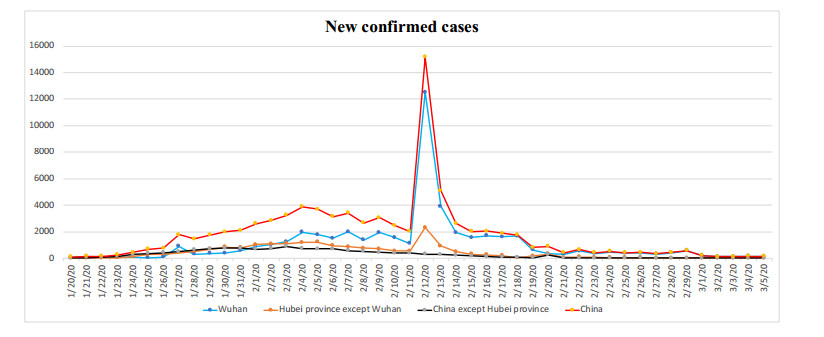









 DownLoad:
DownLoad:
